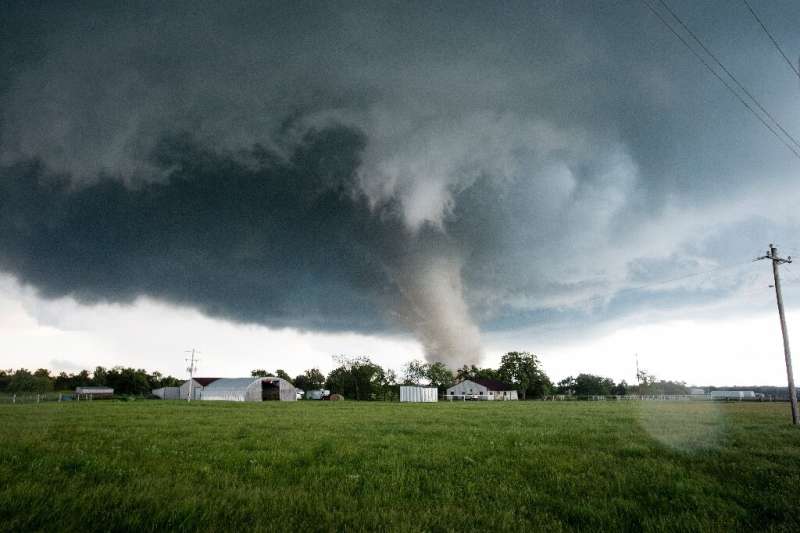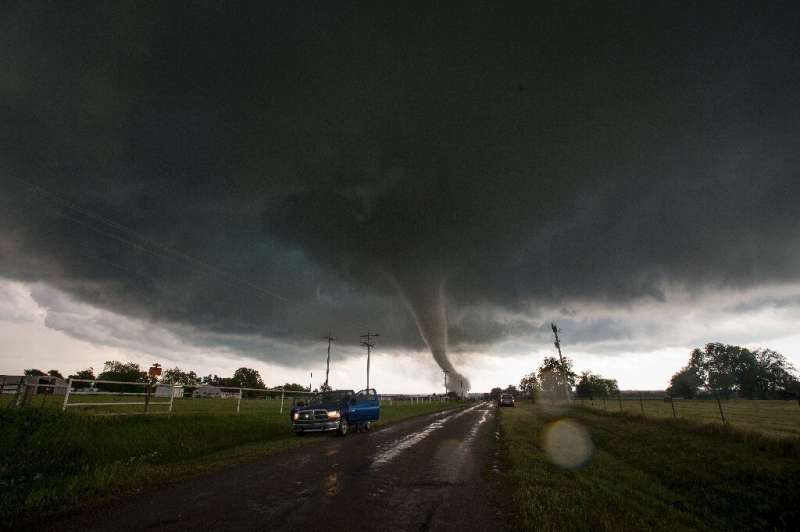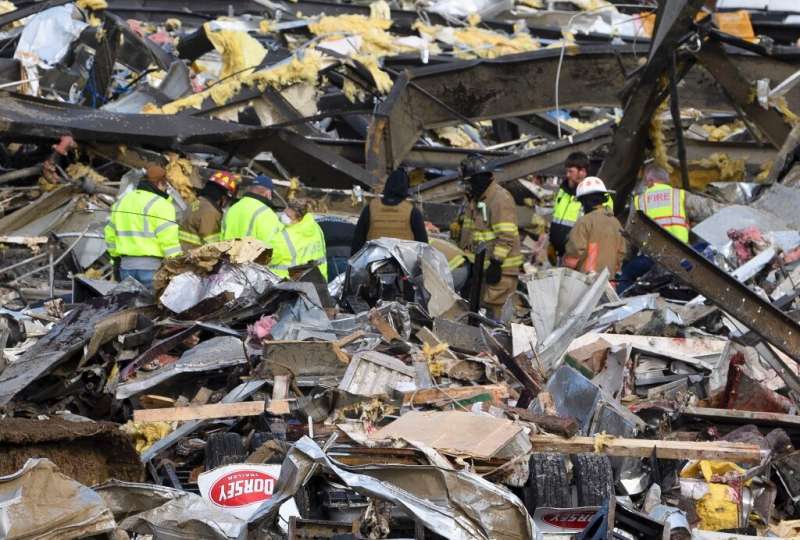Tornadoes: devastating but still not well understood
[ad_1]

Tornadoes are a frequent and often devastating weather phenomenon most commonly seen in the United States, but meteorologists are still unable to say exactly how they originate.
“The US typically has more tornadoes than anywhere else in the world, though they can occur almost anywhere,” according to the National Weather Service (NWS).
Hardest hit are Great Plains states like Kansas, Oklahoma and Texas, though they are also common in many other states, all east of the Rocky Mountains.
Origins
Scientists still struggle to pinpoint the precise way in which these powerful storms form.
“Much about tornadoes remains a mystery,” according to the National Severe Storm Laboratory, part of the National Oceanic and Atmospheric Administration (NOAA). “They are rare, deadly and difficult to predict, and they can deal out millions or even billions of dollars in property damage per year.”
What is known is that they generally result from so-called “supercell” thunderstorms characterized by extremely powerful updrafts, according to NOAA.
“Within the storm, a strong vertical wind shear causes a horizontally rotating cylinder of air. The updraft lifts the rotating cylinder within the supercell. The rotating cylinder of air narrows, becoming stretched, and spins faster and faster, forming a tornado.”
The NWS notes: “Tornadoes develop extremely rapidly, and may dissipate just as quickly. Most tornadoes are on the ground for less than 15 minutes.”

Devastation
“Tornadoes are nature’s most violent storms,” according to the NWS, with winds that can reach nearly 300 miles per hour (500 kph). They can wreak devastation on a path more than one mile wide and 50 miles long—or longer.
The devastating tornado that killed dozens in Kentucky on December 11, 2021 stayed on the ground for 227 miles, said Kentucky Governor Andy Beshear. That would be a record, if confirmed.
On average, tornadoes claim 50 lives in the US each year, NOAA said.
The spring of 2011 brought the deadliest spate of tornadoes in recent history, with more than 580 people losing their lives in April and June. They caused damage estimated at $21 billion.
After a tornado passes, scientists evaluate its strength based on the damage inflicted and on measurements of wind speed.
They then classify it using the Enhanced Fujita (EF) scale, which assigns ratings from EF-0 to EF-5. EF-0 means “light” damage and wind gusts of 65 to 85 mph, while EF-5 signifies gusts of over 200 mph and “incredible” damage. (Before 2007, the original Fujita scale used ratings of F-0 to F-5.)
Survivors’ tales
The NWS has gathered first-person accounts from tornado survivors like William, a resident of Smithville, Mississippi, who was at home “watching the news” when a powerful storm struck in 2011.

He heard a local meteorologist say “the storm was coming to Smithville and I just stood there watching, waiting, looking at the TV and thinking this isn’t gonna happen.
“About 30 seconds later, the power went out and the entire house shook for a minute and then stopped and I thought it was over, so I was about to get up from my floor when the shaking began again and wouldn’t stop this time. I felt the pressure drop and as the shaking got louder, I got worried.
“Then it felt like the house exploded. I woke up one hour and a half later in a field a quarter mile away from the house with cuts to my body and a deep cut to my head.”
Michelle, a resident of the small Oklahoma town of Skiakook, survived a 1991 twister.
“The noises I heard during the tornado hit was indescribable. I do remember hearing nails squeak out of boards as they were being forced out…,” she said.
“When it was all over, the tornado that hit our town was measured F4. It leveled several of the brick homes in that neighborhood…
“I have rheumatoid arthritis so the intense low pressure temporarily disabled me. I couldn’t walk.
“It was the absolute most frightening experience I have ever been through.”
© 2021 AFP
Citation:
Tornadoes: devastating but still not well understood (2021, December 12)
retrieved 12 December 2021
from https://phys.org/news/2021-12-tornadoes-devastating-understood.html
This document is subject to copyright. Apart from any fair dealing for the purpose of private study or research, no
part may be reproduced without the written permission. The content is provided for information purposes only.
[ad_2]
Original Post


38 thoughts on “Tornadoes: devastating but still not well understood”